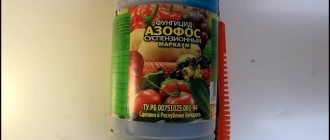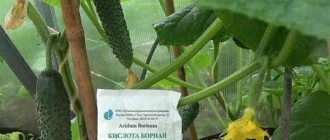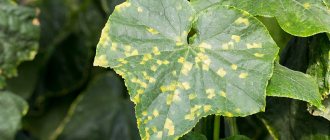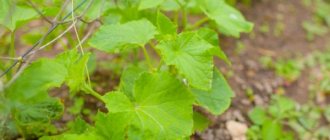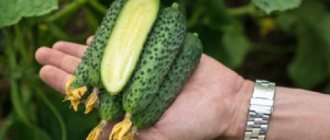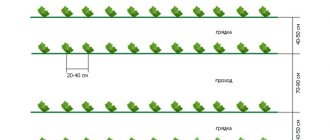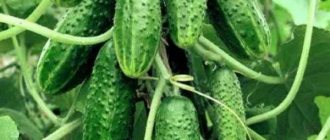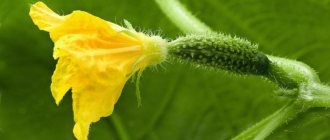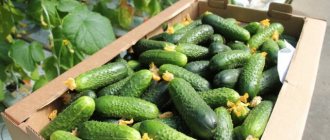Why is trichopolum used for plants?
Gardeners are enterprising, inventive people, ready to experiment on the site in order to save the harvest. But any measures must be approached wisely and followed the recommendations, otherwise it is easy to harm the plants and get the opposite result. So it is with Trichopolum, a medicine that is part of the group of antimicrobial and antiprotozoal drugs used to treat bacterial infections.
On a note! Trichopolum (metronidazole) is not an antibiotic!
The main component of the drug is metronidazole, which blocks the synthesis of nucleic acids of microorganisms and thereby causes the death of pathogens. It is effective against a wide variety of fungi and is widely used in medicine.
Summer residents have adopted the medicine, using trichopolum against late blight on tomatoes. The disease is caused by fungi spread by zoospores. Brown or gray spots appear on the leaves, which spread to the stems, fruits, and shoots. The tablet solution successfully copes with foci of the disease and is also used as a means of prevention. But its spectrum of action is much wider, in addition to the dangerous late blight on nightshades, the drug also helps with other infections:
- powdery mildew (on cucumbers, gooseberries, roses). Causes yellowing, wilting and drying of leaves. The process of photosynthesis is disrupted, the plants gradually die;
- angular spotting (cucumbers). Necrotic spots appear on the leaves and vines of plants, which leads to the death of the tissues of the bushes and death;
- Fusarium A fungal disease in which the leaf blades of plants turn yellow, the stem becomes thinner, and rot occurs.
In addition, the specific bitter taste of the tablets, which persists in solutions, repels pests of garden crops: aphids, slugs, onion and cabbage flies.
What is late blight and why is it dangerous for tomatoes?
Late blight is a dangerous fungal disease that can lead to the death of the entire crop. This problem is faced not only by novice summer residents, but also by experienced vegetable growers. The disease affects tomatoes growing in open ground and grown in greenhouses.
The course of the disease is rapid. The main symptom is the appearance of brown spots on the fruits, leaves and stem of the plant. Most often, late blight appears at the end of summer, when air humidity rises.
You can see a wide selection of remedies against the disease on the market, but late blight can quickly adapt to chemicals: experts do not recommend regularly using the same remedy.
Many summer residents have discovered simple folk methods that are just as effective as special chemicals.
What does greenery give to tomatoes?
Zelenka is intended for treating wounds, but its disinfecting properties also help summer residents in the fight for the harvest. One bottle of the product contains 1-2% brilliant green, the remaining 98% comes from ethanol and purified water.
Even in such a small concentration, brilliant green blocks the proliferation of microbes and effectively disinfects plant damage.
Experienced vegetable growers know that this inexpensive pharmaceutical drug copes well with late blight, a dangerous fungal disease of tomatoes. The product also destroys putrefactive and yeast bacteria, scab microbes and pathogens of powdery mildew, olive spot and verdigris.
Zelenka can be used to prevent diseases of tomatoes and cucumbers. It is also used to lubricate cuts on plant stems when planting or pruning branches. You can also use this product to fertilize the soil.
Regular spraying with brilliant green promotes the rapid establishment of plants.
Will it help against late blight?
Zelenka is able to defeat fungal diseases due to the content of copper compounds. It has disinfecting properties and also promotes rapid healing of plant areas damaged by late blight.
The remedy is effective in preventing and treating the disease in the early stages, but in advanced cases, brilliant green is unlikely to help.
The benefits and harms of brilliant green for tomatoes
Reviews show that brilliant green copes well with diseases such as late blight, powdery mildew, basal or root rot, and bacterial cancer. Many of these diseases develop due to a lack of copper in the soil. Zelenka saturates the soil with a useful element.
Advantages and disadvantages
Medicine cannot be considered a panacea for plant diseases. Trichopolum has shown its effectiveness, but it also has “cons” that must be taken into account.
Advantages of the product:
- helps cope with a large list of infections;
- ease of use (tablets are diluted in a container with water, topped up to the required volumes, and the plantings are treated using standard sprayers);
- cost-effectiveness of the product;
- effectiveness as a preventive and also as a therapeutic agent (in the initial stages);
- does not contain components toxic to humans, and is safe if dosages are observed;
- After spraying, fruits and vegetables can be eaten (you just need to wash them thoroughly with water).
Flaws:
- Trichopolum is a medicinal product; it is not officially included in the State Register of products that are allowed to be used in crop production (this is a “folk” remedy);
- with constant use of tablets, microorganisms become resistant to them, the effect of action decreases;
- There are no scientific studies on the effects of the metronidazole component on plants.
APPLICATION OF TRICHOPOL FOR TOMATOES
Treatment of tomatoes with Trichopolum is currently one of the most effective and environmentally safe ways to protect this popular garden crop in our country from late blight.
Late blight, or brown rot, of tomatoes can in a relatively short period of time affect almost all above-ground parts of a garden crop, and therefore quite often causes the loss of more than 50% of the crop. The rapid spread of the disease can be facilitated by sharp temperature fluctuations, as well as cold dew in the autumn and too thick plantings of tomato bushes.
You can treat tomato bushes with Trichopol at almost any growing season, observing the following rules:
- - ten tablets of the drug must be dissolved in 5-6 liters of warm water;
- — a good result is obtained by adding ten drops of ordinary pharmaceutical brilliant green to the solution;
- - the resulting solution is sprayed on tomato bushes in cloudy but not rainy weather;
- — it is best to spray plants in the early morning or after sunset;
- — the frequency of treating tomato bushes with a solution based on trichopolum is usually about three times a month;
- - it is possible to replace trichopolum with a more budget-friendly analogue called “Metranidazole”, or Metronidazole, which has the same antibacterial effect.
Release forms, analogues
Trichopolum is available in tablets and also in the form of a liquid solution. In cellular packages - 10 tablets, each - 250 grams of metronidazole.
You can buy the medicine in pharmacies without a prescription. If necessary, Trichopolum is replaced with Metronidazole, also available in tablet form. These drugs have common indications for use in medicine, but are not completely identical. For garden treatments, the nuances of drug differences are not so important, but it must be taken into account that Metronidazole is cheaper.
APPLICATION FOR TREATMENT OF OTHER CROPS
Pharmaceutical products for the protection of garden crops are used by domestic summer residents more and more often, which is due to the availability of such drugs and their relative harmlessness to both the environment and the human body.
As a rule, all solutions based on Trichopolum are used to prevent late blight, and to obtain a working composition, you should focus on a concentration of one Trichopol or Metronidazole tablet for each liter of water.
We should not forget that Trichopolum is one of the fairly strong antibiotics and has a large number of contraindications, therefore it is not recommended to treat garden crops with it at the stage of fruit ripening.
Recipe for preparing the solution
In the garden, the drug is used in the form of a working solution, which is used to spray the affected parts of plants or all plantings for preventive purposes.
How to prepare and dilute a standard spray composition:
- a package of tablets (20 pieces) is crushed into powder, poured into a jar of water (0.5 liters), stirred gently;
- pour the contents into a bucket and add warm water to a full volume of 10 liters;
- mix well;
- insist for 20-30 minutes.
The prepared solution is poured into the spray tank and the plantings are treated.
Attention! The working solution is prepared before use, calculating the exact volume and flow rate. It is not recommended to store the composition.
The dosage of solutions for soaking seeds, watering seedlings, and adult plants will be less: 10 tablets (half a pack of Trichopolum) are diluted per 10 liters.
How to treat tomatoes with Epin
Instructions for using the drug Epin for tomato seedlings are similar to the instructions for similar drugs. If you follow the standards outlined in it, the result will not be long in coming. You should start processing only after carefully understanding how to spray tomatoes with Epin.
This stimulator can be used at any stage of plant development:
- Soaking seeds. It is produced before planting in the ground to activate the germination process and further strengthen the immune system. To treat 15 g of seeds you will need a solution of 2 g of Epin and 100 ml of water;
- The appearance of 2-3 true leaves. Processing tomato plantings at this time allows you to avoid the appearance of a black leg and prevents the seedlings from stretching too much. The solution is prepared at the rate of 1 ampoule of the product per 1 liter of water;
- Picking. Before dividing the seedlings, treatment can be carried out to allow the plant to better withstand stress when the roots are damaged. The solution is made weak: 3 drops of the drug per 1 liter of water;
- Landing in the ground. In order for the plants to take root and acclimatize faster, as well as to increase resistance to late blight, it is advisable to treat the tomatoes with a solution of 1 ml of Epin per 5 liters of water;
- The period of bud formation and flowering. Plants treated at this stage have significantly less ovary shedding. Consumption rate: 1 ampoule per 1 liter of water;
- Unfavourable conditions. If return frosts are expected, the plants are tormented by the heat or are attacked by pests, additional spraying can be carried out no more than 2 times a week. This will help strengthen the immunity of tomatoes and stimulate the speedy recovery of the affected parts of the plant. The solution is prepared at the rate of 1 ampoule per 1 liter of water.
Epin is not absorbed by the root system of tomatoes; it is intended only for spraying the above-ground part of the plant.
Treatment should be carried out in the morning or evening, in calm weather. If the seedlings have been affected by disease or mechanically damaged, all dead, dried and yellowed parts should be removed.
Epin can be used both for plants in open ground and in greenhouses.
Epin for tomato seedlings
How to use Trichopolum correctly
The effectiveness of the procedures depends not only on the effectiveness of the drug, but also on the correct treatment regimen and spraying time. Trichopolum (metronidazole) gives an effect in the initial stages of infection, and it is even better if the treatments are carried out in advance.
Approximate diagram:
- processing of seed material (soaking seeds in a solution, watering the seeds immediately after planting them in the ground);
- watering tomato and eggplant seedlings with a solution when picking;
- soil irrigation when transplanting seedlings to a permanent place in shelters or beds.
Such preventive work usually gives results: the seedlings grow strong and healthy. The protection works, pathogens avoid treated plants, and the risk of disease is minimal.
Treatments at the initial stage are followed by spraying of leaves in the summer, which alternate with watering of tomatoes or cucumbers at the root.
Plantings are regularly inspected so as not to miss the first symptoms of insidious infections. This is especially important for summer residents who appear on their plots only on weekends. Having missed the first signs of the disease, within a week you can see tomatoes infected with fungi or wilted and yellowed cucumber vines in the beds and greenhouses.
Another scheme is used when vegetables are sprayed throughout the season, approximately once every 10-14 days. But in this case, it is necessary to combine metronidazole with other components and alternate drugs, otherwise microorganisms quickly adapt to the compositions.
From late blight on tomatoes
Late blight most often occurs on tomatoes, potatoes and eggplants. Related conditions:
- increased air humidity (especially in greenhouses). Lack of loosening, improper watering (on bushes, with cold water), excess moisture - all this causes infection;
- thickened rows of tomatoes;
- cold dew (especially destructive for plantings on open ridges);
- “fattening” plants (overfeeding with nitrogen fertilizers). In such tomatoes, the immune system is weakened, there is an intensive growth of the ground leaf part and stems to the detriment of fruit formation.
Tomatoes in greenhouses are sprayed already in June, without waiting for the first signs of late blight. Fungi become active at the beginning of summer, and if the environment is favorable, foci of infection will appear. The peak occurs in the second half of summer, when there are differences in temperature between day and night, and it rains.
Instead of using tomatoes, it is advisable to treat vegetables growing nearby with the working composition. The number of sprayings is 3-4 times per season, the interval is 10-12 days. When dark spots and wilting leaves appear, the cause is found out and immediately treated with medicine.
On a note! Root watering and spraying of leaves with Trichopolum is alternated with treatments with other compositions: ash or garlic infusion, compositions with whey. The effectiveness of such procedures is much higher; there is no resistance of fungi to the components of the drug.
The last procedure is 10-14 days before the start of tomato harvesting.
For yellow spots on cucumbers
Judging by the reviews, Trichopolum showed excellent results in the fight against cladosporiosis and powdery mildew in cucumber beds. With brown (olive) spot, the ground parts of plants and fruits are covered with yellowish, brown spots and ulcers. Cucumbers are unsuitable for food; the bushes dry out and die.
White and yellow spots with a coating are signs that the plantings are affected by powdery mildew. In both cases, a standard solution is prepared for treating cucumbers and the bushes are sprayed from top to bottom. Repeat treatments once a week until the crop is completely cured of powdery mildew. Not only infected plants are sprayed, but also bushes growing nearby so that the disease does not spread to them.
Trichopolum for powdery mildew on gooseberries
Powdery mildew causes a lot of harm to berry gardeners. Along with chemicals, summer residents use a solution of Metronidazole (Trichopol) against infection.
The composition is standard: 20 tablets are diluted in a 10-liter bucket of warm water. Then the gooseberry bushes are sprayed, including the set berries. You can also add 20 drops of brilliant green to the composition, the procedure will be more effective.
On fruit crops
The drug helps with various fungal infections on pears, cherries, and apple trees. Gardeners spray trees when leaves wither and black spots appear on them. The working composition is similar to that prepared for vegetables.
Summer residents also prepare “porridge” from crushed tablets and a small amount of water, which is used to smear tree bark damaged by fungi. Then the affected areas should be covered with garden pitch or clay.
Treatment of bacterial cancer of grapes
Tomatoes belong to the category of vegetable crops susceptible to infection by various infections. In the arsenal of those who grow them, there are always means to combat fungi and bacteria - these are both industrial chemicals and those prepared according to folk recipes.
Among them, Trichopolum is a medical drug used to combat garden pests and plant infections.
Trichopolum, metronidazole are the names of medications with the active ingredient metronidazole, which is active against a large number of single-celled microorganisms that cause various diseases and bacteria. In addition to the main (active) substance, the drug contains gelatin, potato starch, starch syrup and magnesium stearate.
The use of Trichopolum in the fight against infections of garden plants is based on the action of metronidazole, which leads to the death of the infectious agent.
Most tomato diseases are fungal and bacterial in nature: powdery mildew, late blight, fusarium, brown and angular spot, alternaria, anthracnose, white, dry, gray rot, therefore Trichopolum is effective in the prevention and treatment of these infections.
Like any product containing chemicals, the drug and its analogues have their pros and cons.
Advantages
- affordability;
- good performance;
- ease of use;
- the composition does not contain any components hazardous to health and the processed fruits can be used as food after washing.
Flaws
- not included in the State Register of drugs approved for use in crop production;
- frequent use leads to bacterial resistance to the drug and when they enter the human body, treatment of the disease becomes significantly more difficult;
- lack of research on the effects of trichopolum on plant organisms.
The product can be used for preventive and therapeutic purposes. Treatment begins when signs of the disease appear, and prevention is carried out in several stages:
- processing of seed material;
- when picking tomato seedlings;
- when planting seedlings in the ground, i.e. at the beginning of the summer period;
- before harvest (2 weeks).
The drug is used to prepare solutions based on it, so it can be used for spraying the entire plant and for watering the soil.
Important!
It is recommended to use Trichopolum no more than once every 10 days.
In the fight against tomato diseases, most often, they use not just one remedy, but alternate them. So it is in the case of Trichopolum - it should be used along with other folk methods. This is also necessary to ensure that resistance to the active substance does not arise and the effectiveness does not decrease.
To achieve the desired effect, treatment is carried out following the rules:
- the best time is before noon or evening (after sunset);
- the weather should be without precipitation and wind;
- pay special attention to the lower part of the bush due to its proximity to the soil;
- Follow the recommended dosage to avoid burning the plant.
You can prepare different solutions based on trichopolum (metronidazole), and use additives to enhance its effect and eliminate the plant’s addiction to the active substance.
How to cook:
- Recipe No. 1 (classic) - grind tablets (20 pieces) into powder, stir in a small amount of water and then dilute in warm water (10 l). After infusion (20 minutes), apply as a spray.
- Recipe No. 2 (with brilliant green) - add 1 bottle of brilliant green to the solution prepared according to recipe No. 1, which enhances the effect of trichopolum. Spray the entire bush, trying to get to the bottom of the leaves.
- Recipe No. 3 (with iodine) - for treatment use recipe No. 1 1 bottle of iodine, for prevention prepare a solution of 10-15 tablets and 10 liters of water and add 1 bottle of iodine.
Trichopolum is not a hazardous chemical and no special safety precautions are required when using it.
The effectiveness of the active substance remains for 5 years - if stored for a longer period, there is no point in using it.
Tips and reviews
Alexander Ivanovich, Udmurtia
I started using Trichopolum about 2 years ago. Late blight tormented me, I decided to try a new remedy for me. I started using it the first year when spots appeared on the leaves. The solution was made from 20 tablets, sprayed once a week. We managed to stop the spread, but at the end of August it all started again.
I had to collect the tomatoes to save the harvest. In the second year I decided to try again, I read about the options for use. For prevention, I sprayed the seedlings at home and then after transplanting, and treated the adult bushes in mid-July and early August. There was no late blight, but the weather was also unsuitable for it.
So, I think, Trichopolum can be used against late blight, but in a systemic manner.
Evgenia, Kurgan
In August, late blight is a common occurrence in our country, and I prepare for its appearance in advance - I carry out prevention with Trichopolum. At first I made a solution with only tablets, and then I found a recipe where the dosage is lower, but you need to add milk. Now I use 2 times less tablets, but 1/3 of the solution volume is milk. I use it for spraying seedlings of tomatoes and cucumbers.
The disease first affects bean leaves; watery spots appear on them, which grow into vague, brown spots with a characteristic yellow-green border. The stems are covered with red-brown stripes and break easily. Gradually, the beans also acquire a brownish tint with colorless plaques.
Treatment is carried out over the entire above-ground part of the diseased plant in dry weather. For spraying, a composition is made with 15-20 tablets of medicine dissolved.
This type of disease occurs in greenhouse and greenhouse tomatoes. There are two types. Diffuse cancer affects the stem and leaves, they wither, plants and fruits become covered with ulcers and spots. Local cancer is dangerous for the fetus. When you cut a tomato, yellow veins are visible that stretch to the seed chambers.
During treatment, diseased tomatoes are sprayed twice a day, morning and evening. The procedure is carried out every ten days. After the rain, the plants are again treated generously. To prepare the solution, take from 10 to 20 tablets of the drug.
The infection enters the plant through damage. At this place, growths appear that are at first light and soft, then become hard and turn brown.
As with diseases of fruit trees, in this case soil treatment is necessary, since the pathogen lives in it. The ratio for the solution is: 1 tablet / 2 liters of water. But treatment is possible only at an early stage of the disease.
This disease does not damage the fruit but affects the leaves. Yellow spots appear on them, and a velvety gray coating with a brown tint forms on the reverse side. As the disease progresses, the plants dry out and new ovaries do not form.
For treatment, tomatoes are sprayed with a solution prepared 20 minutes before the start. 15 tablets of the product are dissolved in 10 liters of water, and a bottle of brilliant green is poured out. Treatment is carried out in the morning and evening throughout the plant.
For prevention, tomatoes are watered at the beginning of the growing season with the same solution, only without adding brilliant green.
- Oksikhom. Available in tablet form. To prepare the solution, add 1 tablet to 5 liters of water. In addition to treating the plant itself, it is also recommended to spray the soil underneath it.
- Fitosporin M. drug is used as a prophylaxis for late blight disease. Dissolve 3 grams in 1 liter of water. drug. It is recommended to treat seedlings with this solution every week.
- Quadris. A new drug that has a wide spectrum of action and belongs to strobilurins. It is used to combat a large list of diseases, including powdery mildew, late blight, downy mildew and spotting. When it comes into contact with a plant, the drug begins to act instantly.
- Acrobat. This tool was developed quite recently. As a result, fungi and bacteria have not yet developed an addiction to it.
- Ridomil. Mainly used to combat late blight and alternaria. The drug is available in the form of granules, which greatly facilitates the process of its use. Ridomil does not react with virtually any pesticide.
- Agate. A drug of biological origin. Used for pre-treatment of seeds before sowing. Its use not only promotes rapid seed germination, but also reduces the risk of disease in seedlings and adult plants by 50 - 60%.
- Maksim. Mainly used for seed treatment, which prevents the development of rot in young seedlings.
- Fundazol. It comes in the form of a white powder that has a slightly unpleasant odor. This is what repels insects from young seedlings.
- Bordeaux mixture. Used to combat fungal diseases.
These are just some of the drugs that are used to combat or prevent various types of tomato diseases. Experienced gardeners do not advise focusing on any one remedy. This can cause bacterial or fungal diseases to become addicted to it. It is necessary to spray the plants with several preparations, alternating them.
In addition to chemicals, gardeners also use solutions prepared according to folk recipes. According to reviews, their effectiveness is no less than that of ready-made fungicides.
Among the most famous and effective I would like to name the following:
- garlic solution (crush 1.5 tablespoons of garlic and pour 10 liters of warm water over them. Leave to infuse in this form for 24 hours. After the specified time, strain the solution and then add 2 grams of potassium permanganate. The first time this solution is used during formation of the ovary. Subsequently, it can be sprayed on the plants once a week);
- milk whey (this product is environmentally friendly, which allows it to be used daily);
- baker's yeast (dissolve 100 grams of yeast in 10 liters of water. This solution is recommended for spraying when the first signs of disease are detected);
- table salt (the product is used to process green tomato fruits. To prepare it, you need to dissolve 250 grams of salt in 10 liters of water);
- milk with iodine (16 drops of iodine must be dissolved in 1 liter of low-fat milk. In addition to the fact that this solution will help prevent the development of a large list of diseases, it helps accelerate the ripening period of fruits);
- tinder fungus (100 grams of fresh mushroom is steamed in 1 liter of warm water. This solution can be used after 12 hours. With its help you can fight the development of late blight on tomatoes);
- propolis (100 grams of propolis, which can be purchased at a pharmacy, dissolved in 1 liter of water and left for 24 hours);
- rotted straw (soak 1 kg of straw in 10 liters of warm water and add 200 grams of urea there. The mixture should sit for 4 - 5 days. After this, drain the liquid, which is used for spraying tomatoes. The treatment can be repeated every 15 days).
Folk remedies
How can you enhance the effect of the drug?
To prevent pathogenic microorganisms from becoming accustomed to the components of the drug, Trichopolum treatments are alternated with spraying with other means. Summer residents praise milk-iodine compositions, as well as garlic infusions.
Preparation:
- a liter of whey is poured into a bucket, topped up to full volume with water (9 liters), 25 drops of iodine are added, and the plantings are sprayed onto the leaves;
- A liter of sour kefir is poured into a bucket of warm water and mixed. Then add 50-80 grams of chopped garlic and mix again. Leave for 30 minutes and process tomatoes, cucumbers, and eggplants;
- dilute yeast (raw) in a bucket of water, 100 grams per 10-liter volume, leave for 2-3 hours;
- mullein (1/4 kg) is diluted in 5-6 liters of water, left for a day. Spray tomatoes and cucumbers 3-4 times per season.
Such compositions are recommended for both prevention and treatment of crops in the initial stages of the disease.
The effect of solutions with Trichopolum is enhanced by the addition of iodine, brilliant green, and potassium permanganate.
Recipes:
- add a bottle of iodine to the standard composition with Trichopolum (20 tablets per 10 liters of warm water);
- Exactly the same scheme, only instead of iodine they pour in a bottle of brilliant green.
Both solutions are prepared immediately before use, treating tomatoes and cucumbers completely in all tiers. Particular attention is paid to soaking the underside of the leaf blades with the composition.
Zelenka (diamond green)
The famous brilliant green solution can be used instead of garden varnish to disinfect wounds and speed up their healing. To do this, take a cotton swab or swab, dip it in brilliant green and lubricate the cuts on trees and shrubs. In the same way, brilliant green can be used to treat rotten areas of dahlia tubers and gladioli bulbs during storage, as well as small cracks in pumpkins.
A solution of brilliant green can also be used for better fruit set in cherries. Dissolve 2 tsp. of this medicine in 5 liters of water and spray the trees immediately after flowering.
Looking for gardening equipment and tools? |
Experienced gardeners recommend treating defects and cracks on bulbs and tubers that are to be stored with an undiluted solution. Green paint can be used to treat small sections of plants when pruning.
Zelenka has proven itself well in the treatment of downy mildew (peronosporosis), which affects cucumbers, zucchini, pumpkin and onions. For treatment, 5 ml of 1% brilliant green per 10 liters of water for spraying once every 7-10 days (repeat three times).
Against powdery mildew, brilliant green is effective only in the early stages of the disease.
This microelement is necessary for plants for normal development and fruiting. Iodine is included in most fertilizers intended for the middle of the growing season - budding and fruit set. It is active against most bacteria and fungi, and has a tanning effect (coagulates proteins). It fights well against such common diseases as downy mildew, late blight and gray rot.
A weak solution of iodine (1 drop per 3 liters of water) perfectly replaces industrial foliar feeding for seedlings of tomatoes, cucumbers, eggplants and cabbage. Plants are sprayed with it 20 days after germination. After the seedlings are planted in the ground in a permanent place, fertilizing must be repeated.
To prevent late blight, some gardeners recommend hanging open bottles of iodine in the greenhouse.
Recently, a water-soluble iodine preparation, Yodopirone, has become increasingly popular among gardeners. It does not have an irritating effect like an alcohol solution. A one percent aqueous solution of Iodopirone can be used for both prevention and treatment of plants.
An iodine solution helps to achieve better flowering of plants, active growth, and also increase their resistance to diseases, in particular to gray rot. To do this, dilute 5-10 drops of iodine in 10 liters of water and spray the plants with the resulting solution once every 10 days during the formation of the ovary and buds.
When is the best time to spray?
Treatments in the garden and vegetable garden are usually carried out in the morning, as well as in the evening. Choose a dry day, without precipitation or wind.
During the day on a hot day, spraying often leads to burns on the leaf blades and wilting of plants. Observe basic safety rules, and although Trichopolum is not toxic, it is better to work with the sprayer with gloves and glasses.
Trichopolum is just one of the many drugs used by summer residents on their plots to combat plant diseases. It is quite effective, especially as a preventative against late blight on nightshade crops. But whether to use it or use the already proven Fitosporin, Trichodermin, Bordeaux mixture is up to each gardener to decide for himself, taking into account his own conditions, capabilities and wishes.
Natalia Severova
What can be replaced
In addition to Furacilin, gardeners also use other pharmaceutical products against late blight: iodine, brilliant green, Metronidazole and Trichopolum.
There is no difference between Metronidazole and Trichopolum - they are based on the same active ingredient. The treatment solution is prepared as follows: 10 tablets of the drug are ground into powder and dissolved in a small amount of water. Then the concentrate is added to a 10 liter bucket of water. Spraying is carried out once every 2 weeks.
Zelenka can be used to treat damage to bushes, as well as to treat diseases. For 10 liters of water, 40 drops of the drug are enough.
Iodine is also used in the fight against late blight at the first stage of disease development. It strengthens plants and increases productivity. The solution for treatment against late blight is prepared in this way: 40 drops of the drug are diluted in 10 liters of water. To improve the viscosity of the solution, add 1 liter of whey or a bar of grated laundry soap to the plants.
